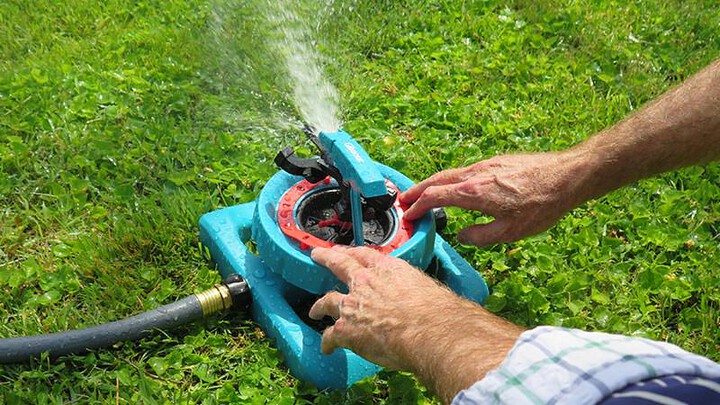If you take a look around your yard, chances are you’ll see many patterns of sun and shade. Between the shadows cast by your house and the shade from the trees, you’ll notice that your grass grows differently in both sun and shade. These areas each need to be maintained differently. Here’s how to take care of your grass so it flourishes regardless of whether it grows in bright light or in light shade.
1. Go for the Right Grass
Although most lawns need between a good six to eight hours of direct sun a day, some shade-tolerant grasses can grow with around four hours of dappled or filtered sun every day. If you’re shopping for grass seeds, invest in a high-quality blend that promises a germination rate of at least 70 percent. High-quality seed has a correspondingly high germination rate, and a low percentage of filler and weed seeds.
To maintain a dense turf in shady spots, overseed shade-tolerant grasses once or twice per year, doing so in the fall for cool-season grasses (like bluegrass, rye and fescues) and in the spring for warm-season grasses (like St. Augustine and zoysia). Be sure to water new seed frequently while it becomes established. If you need advice on watering and caring for new grass seed, check out this video.

1. Know When and How Often to Water
Regardless of whether your grass grows in sun or shade, watering during the early morning hours is best. When you water in bright, sunny weather, the water from the sprinkler can evaporate before it ever hits the ground. In both sunny and shaded areas, watering in the evening increases the likelihood of disease, as the grass leaves do not have time to dry before the sun goes down.
Watering early will ensure that your grass absorbs the water it needs. Setting up a water timer for your hose, such as the Dual Outlet Electronic Water Timer, will take care of early-morning watering for you—even if you have two separate spaces to schedule for and water.

Because grass grows more quickly and soil moisture is drawn up and depleted more rapidly in the sunlight, sunny lawns may need more frequent watering (about an inch per week) than grass growing in shade. Setting up an Adjustable Pattern Master Rectangular Sprinkler for a rectangular lawn or an Adjustable Pattern Master Circular Sprinkler for an irregularly shaped space will cover the job.
Shaded spots still need to be watered, as rainfall doesn’t always penetrate sufficiently to the roots of grass growing under trees. Deep, infrequent watering is the way to go for all lawns. Your grass needs around an inch and a half of water over two watering sessions per week. This watering plan will encourage deep roots. A Stationary Square Sprinkler is a good option, especially for small areas of grass hidden under trees.

1. Let in Light Under Trees
Even though there are shade-tolerant varieties of grass, the key to note is that they tolerate shade—but they still need sunlight. If you’re trying to grow grass under trees, raise the canopy to allow as much light to penetrate as possible.
Use a pruner, like the Gear-Driven Tree Pruner, to remove interior and lower limbs. Your grass will receive more light, and you’ll also improve air circulation, because grass blades will dry off more quickly after watering.
Better yet, mulch around your trees. Young trees grow better without the competition of grass around their trunks, and you will not be tempted to mow too close, which could permanently damage the tree’s bark.
2. Maintain What You’ve Made
With the right grass and watering schedule, you’re well on your way to a great lawn. Fertilize and aerate as necessary, according to recommendations from your local University Extension turf experts. When it comes to mowing, never scalp your grass. In shady spots, cut grass up to an inch higher than you would in sunny spaces. The longer blades encourage photosynthesis, for a dense, thick turf.
If you’ve taken the steps to encourage your grass to grow and you’re still not seeing the results you want, you might want to reconsider your options, such as planting shade-loving groundcovers there. That way, you can still enjoy a lush, green look. Keeping it green throughout your yard will lead to happier outdoor living and, of course, to a Betterday.